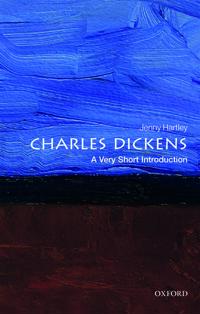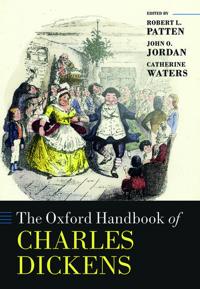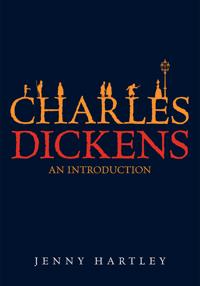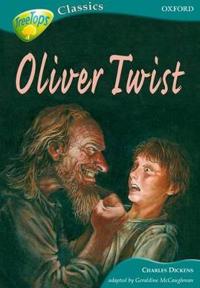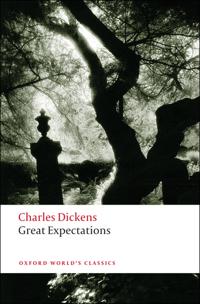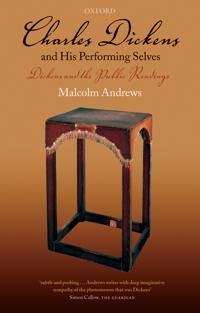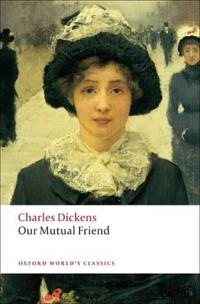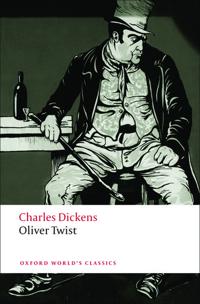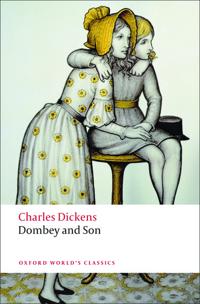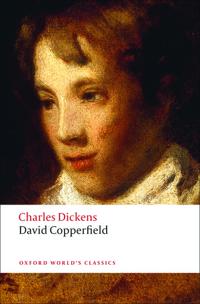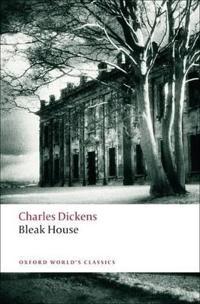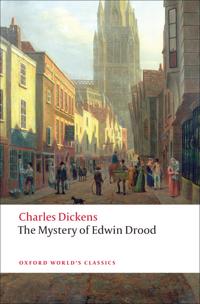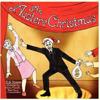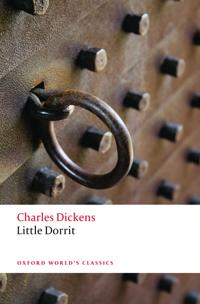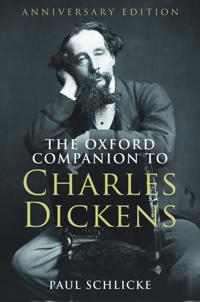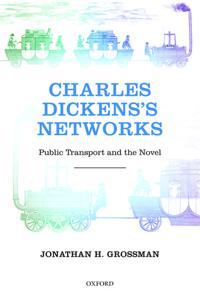Charles Dickens in Cyberspace: The Afterlife of the Nineteenth Century in Postmodern Culture (Inbunden)
avJay Clayton
ISBN: 9780195160512 - UTGIVEN: 2003-07-01Oxford Progressive English Readers: Grade 2: Oliver Twist (Häftad)
avCharles Dickens
ISBN: 9780195455410 - UTGIVEN: 2006-10Charles Dickens: A Very Short Introduction (häftad)
ISBN: 9780198714996 - UTGIVEN: 2019-02Charles Dickens is credited with creating some of the world's best-known fictional characters, and is widely regarded as the greatest novelist of the Victorian age. Even before reading the works of Dickens many people have met him already in some form or another. His characters have such vitality th[...]
The Oxford Handbook of Charles Dickens
ISBN: 9780198743415 - UTGIVEN: 2018-10The Oxford Handbook of Charles Dickens is a comprehensive and up-to-date collection on Dickens's life and works. It includes original chapters on all of Dickens's writing and new considerations of his contexts, from the social, political, and economic to the scientific, commercial, and religious. Th[...]
Charles Dickens
ISBN: 9780198788164 - UTGIVEN: 2017-01Charles Dickens is credited with creating some of the world's best-known fictional characters, and is widely regarded as the greatest novelist of the Victorian age. Even before reading the works of Dickens many people have met him already in some form or another. His characters have such vitality th[...]
Oxford Reading Tree: Stage 16B: TreeTops Classics: Oliver Twist (Häftad)
avCharles Dickens, Geraldine McCaughrean
ISBN: 9780199184880 - UTGIVEN: 200609These children's classics have been sensitively adapted to enrich your junior pupils' reading. They are part of a structured reading programme for juniors from Oxford Reading Tree, Stages 9-16. They have masses of boy and girl appeal and will introduce your readers to significant authors from the [...]
Great Expectations (Häftad)
avCharles Dickens
ISBN: 9780199219766 - UTGIVEN: 200806'you are to understand, Mr. Pip, that the name of the person who is your liberal benefactor remains a profound secret...' Young Pip lives with his sister and her husband the blacksmith, with few prospects for advancement until a mysterious benefaction takes him from the Kent marshes to London. Pip [...]
Charles Dickens and His Performing Selves (Häftad)
avMalcolm Andrews
ISBN: 9780199236206 - UTGIVEN: 200711Charles Dickens had three professional careers: novelist, journalist and public Reader. That third career has seldom been given the serious attention it deserved. For the last 12 years of his life he toured Britain and America giving 2-hour readings from his work to audiences of over two thousand. T[...]
A Tale of Two Cities (Pocket)
avCharles Dickens
ISBN: 9780199536238 - UTGIVEN: 2008-07-15Dickens' second historical novel, which he considered "the best story I have written," provides a highly-charged examination of human suffering and human sacrifice. Private experience and public history paralled one another as the political activities and personal responsibilities of these fictional[...]
Pickwick papers (Pocket)
avCharles Dickens
ISBN: 9780199536245 - UTGIVEN: 2008-05-08In 1836 the 23-year-old Dickens was invited by his publishers to write a monthly something' illustrated by sporting plates. Thus the Pickwick Club was born: its supposed papers' soom outgrew their origins and became a brilliantly comic novel, still among Dicken's most popular works.[...]
Our Mutual Friend (Häftad)
avCharles Dickens
ISBN: 9780199536252 - UTGIVEN: 200811Following his father's death John Harmon returns to London to claim his inheritance, but he finds he is eligible only if he marries Bella Wilfur. To observe her character he assumes another identity and secures work with his father's foreman, Mr Boffin, who is also Bella's guardian. Disguise and co[...]
Oliver Twist (Häftad)
avCharles Dickens
ISBN: 9780199536269 - UTGIVEN: 200805The new Oxford World's Classics edition of Oliver Twist is based on the authoritative Clarendon edition, which uses Dickens's revised text of 1846. It includes his preface of 1841 in which he defended himself against hostile criticism, and includes all 24 original illustrations by George Cruikshank[...]
Dombey and Son (Pocket)
avCharles Dickens, Alan Horsman, Dennis Walder
ISBN: 9780199536283 - UTGIVEN: 200807"Dom-bey and Son"...Those three words conveyed the one idea of Mr. Dombey's life. The earth was made for Dombey and Son to trade in, and the sun and moon were made to give them light. The hopes of Mr Dombey for the future of his shipping firm are centred on his delicate son Paul, and Florence, his [...]
David Copperfield (Pocket)
avCharles Dickens, Nina Burgis, Andrew Sanders
ISBN: 9780199536290 - UTGIVEN: 200807'I have in my heart of hearts a favourite child. And his name is DAVID COPPERFIELD,' wrote Dickens of what is the most personal, certainly one of the most popular, of all his novels. Dickens wrote the book after the completion of a fragment of autobiography recalling his employment as a child in a L[...]
Bleak House (Häftad)
avCharles Dickens
ISBN: 9780199536313 - UTGIVEN: 200805Bleak House, Dickens's most daring experiment in the narration of a complex plot, challenges the reader to make connections - -between the fashionable and the outcast, the beautiful and the ugly, the powerful and the victims. Nowhere in Dickens's later novels is his attack on an uncaring society mor[...]
The Old Curiosity Shop (Pocket)
avCharles Dickens
ISBN: 9780199538232 - UTGIVEN: 2009-04-15One of Dickens's most haunting and bizarre novels, The Old Curiosity Shop is the story of 'Little Nell' and her persecution by the grotesque and lecherous Quilp. This edition uses the Clarendon text, the definitive edition of the novels of Charles Dickens, and includes the original illustrations, fi[...]
The Mystery of Edwin Drood (Häftad)
avCharles Dickens
ISBN: 9780199554614 - UTGIVEN: 2009-03'Where is my nephew?, asked Mr Jasper, wildly. 'Where is your nephew?' repeated Neveille. 'Why do you ask me?' 'I ask you,' retorted Jasper, 'because you were the last person in his company, and he is not to be found.' The Mystery of Edwin Drood, Dickens's last novel, lay unfinished at his death. [...]
Authors In Context: Charles Dickens (Pocket)
avAndrew Sanders
ISBN: 9780199556090 - UTGIVEN: 2009-04-23Charles Dickens explores the work of the most popular author of his age in relation to the contradictory impulses of Victorian society, looking at the vital interconnection between his life and his art. His novels resonate well beyond his own age and continue to be recontextualized on the stage, on[...]
The Selected Letters of Charles Dickens (Inbunden)
avJenny (EDT) Hartley
ISBN: 9780199591411 - UTGIVEN: 2012-03What was it like to be Charles Dickens? His letters are the nearest we can get to a Dickens autobiography: vivid close-up snapshots of a life lived at maximum intensity. This is the first selection to be made from the magisterial twelve-volume British Academy Pilgrim Edition of his letters. From ove[...]
Little Dorrit (Pocket)
avCharles Dickens, Harvey Peter Sucksmith, Dennis Walder
ISBN: 9780199596485 - UTGIVEN: 201207'Clennam rose softly, opened and closed the door without a sound, and passed from the prison, carrying the quiet with him into the turbulent streets.' Introspective and dreamy, Arthur Clennam returns to England from many years abroad to find a people gripped in their self-made social and mental pris[...]
Sketches Of Young Gentlemen And Young Couples (Inbunden)
avCharles Dickens
ISBN: 9780199603282 - UTGIVEN: 2011-11-10The Oxford Companion to Charles Dickens (Inbunden)
avPaul (EDT) Schlicke, Simon (FRW) Callow, Paul (EDT) Schlicke
ISBN: 9780199640188 - UTGIVEN: 2011-01Reissued to celebrate the bicentenary of Charles Dickens's birth, The Oxford Companion to Charles Dickens (formerly The Oxford Reader's Companion to Dickens) draws together an unparalleled diversity of information on one of Britain's greatest writers: covering his life, his works, his reputation, an[...]
Charles Dickens's Networks
ISBN: 9780199682164 - UTGIVEN: 2013-12The same week in February 1836 that Charles Dickens was hired to write his first novel, The Pickwick Papers, the first railway line in London opened. Charles Dickens's Networks explores the rise of the global, high-speed passenger transport network in the nineteenth century and the indelible impact [...]
Charles Dickens
ISBN: 9780233003290 - UTGIVEN: 2011-12Charles Dickens is the definitive illustrated guide to the man and his works. It follows Dickens from early childhood, including his time spent as a child labourer, and looks at how he became the greatest celebrity of his age - and how he still remains recognized as one of England's greatest celebri[...]



